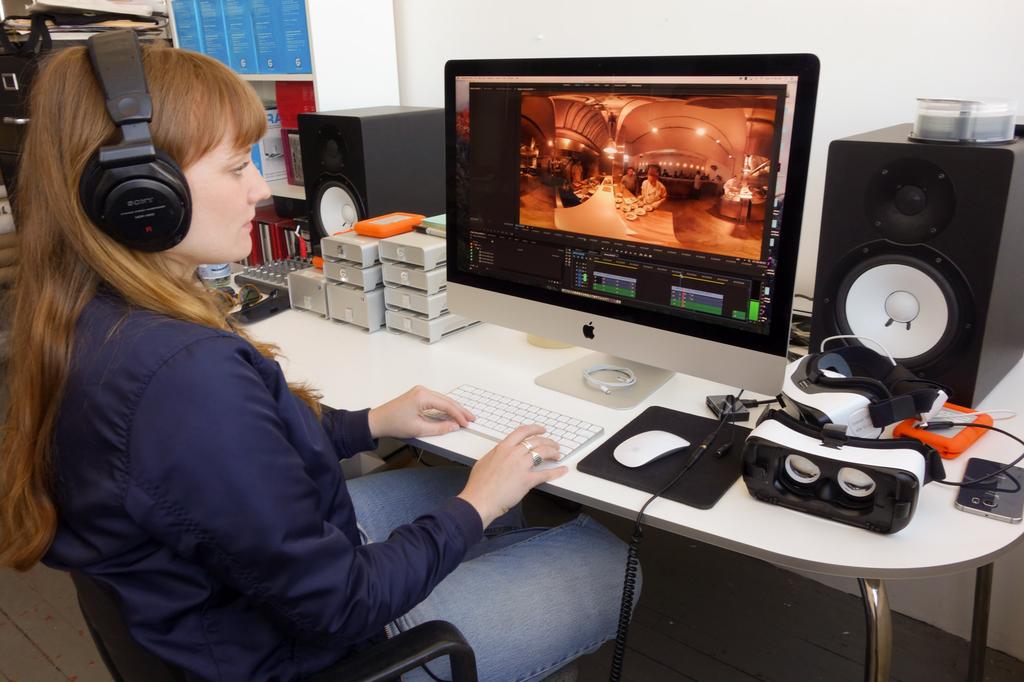
Essential Doc Reads is a weekly feature in which the IDA staff recommends recent pieces about the documentary form and its processes. Here we feature think pieces and important news items from around the Internet, and articles from the Documentary magazine archive. We hope you enjoy!
New York Business Journal talks to filmmaker Gary Hustwit about his new VR content studio, Scenic.
"The seed funding was put in by myself and the partners who started the company. We bootstrapped the seed capital. We're in the initial stage of exploring a Series A round. We have been doing major work for HBO. There is currently a demand for branded content. People want us to make films for them to accompany magazines, retailers — like what the New York Times has done. They've explored how VR could work for them. The longer term revenue picture for us is original content and original VR films. There's no shortage of companies interested in VR and wanting VR branded content."
Lauren Wissot of Filmmaker interviews Out Run filmmakers Leo Chiang and Johnny Symons about showing their film at Full Frame in North Carolina, following passage of the state’s anti-LGBTQ HB2 law.
"We struggled with coming to North Carolina to show Out Run because of the call for boycott, but ultimately we decided to come. We felt good about sharing a nuanced portrait about LGBTQ people from a different part of the world to those North Carolinians who were interested in learning more. We also want to support Full Frame, which programmed three films about transgender people in this year’s festival."
From Latino Rebels, a call to address the lack of Latino representation at the Tribeca Film Festival.
For many Latino filmmakers in the U.S. and Latin America, premiering at the Tribeca Film Festival (one of the top 10 North American film festivals) is vital to achieving a career-changing goal that can open so many doors for their projects (from promotion to distribution), but unattainable to the talented ones who cannot participate. Before even completing their passion project for submission, many of our multimedia-makers face impediments, ranging from a lack of available funding streams to connections with powerful networks that would unlatch doors for serious consideration of their noble works.
Anthony Kaufman of Indiewire scrutinizes the popularity and future of the nonfiction series.
Who would have thought in today’s insta-vine-tweet culture that multi-hour nonfiction juggernauts would so dominate the cultural discourse? From HBO’s 279-minute The Jinx to Netflix’s ten-hour Making a Murderer to ESPN’s upcoming 7 1/2 -hour OJ: Made in America (screening in its entirety this Saturday at the Tribeca Film Festival), American documentaries aren’t just getting better; it appears they’re getting bigger. But despite the acclaim and attention these projects have received, they’re also difficult to produce and an even greater challenge to get green-lit and picked up for broadcast. You’d think dozens of such projects would be in the pipeline, but neither HBO, nor Netflix, nor ESPN have anything of similar scale actively in the works.
From RealScreen, Manori Ravindran looks at recent and upcoming docs that focus on recent history.
The case is far from what may typically be thought of as "history," and its corresponding programming reflects a strong appetite among North American audiences for modern historical fare – events from the past 20 to 30 years viewers can still remember from the news, or perhaps their youth.
The New Yorker film critic Richard Brody analyses the Maysles brothers’ What’s Happening! The Beatles in the USA.
The Maysles brothers’ film shows the Beatles to be not media creations but media geniuses, artists who saw their own image in the world and did something more dramatic, more profound, and more subtle than creating it or controlling it—they acknowledged it. Even as they mocked it, they took their place in it—and it took its place within them. They turned their own self-consciousness, or the consciousness of the identity gap between their public personae and private lives, into an identity in itself, elusive, ironic, whimsical. They fused with what they mocked and, in the process, turned this modern consciousness into the new baseline, the new classicism, the new universal. Where Chuck Berry, Elvis Presley, Little Richard, Jerry Lee Lewis, and others played the first rock and roll, the Beatles turned the form’s fame into their—and its own—very subject, and the Maysleses were there to see it happen.
"Sixteen percent of the population in the US is Latino," stresses [NALIP executive director Kathryn] Galán. "And in the major media centers like New York and Los Angeles, it is 30 percent. Is media that diverse? Do the films chosen by major US festivals reflect that percentage of filmmakers and their concerns? Until you see Latino filmmakers in theaters, read stories about them in major magazines, see that they receive critical acclaim, see them in senior positions...we will continue to work-until we can really say that we are in a post-racial society."
O.J. Doc Does End Run Toward Oscar Eligibility
read more
List of the Best Documentary Grants to Fund Your Film
read more
VideoBlocks to Offer 360-Degree, VR Stock Footage
read more
YouTube Adds 360-Degree Live Streaming, Spatial Audio
read more